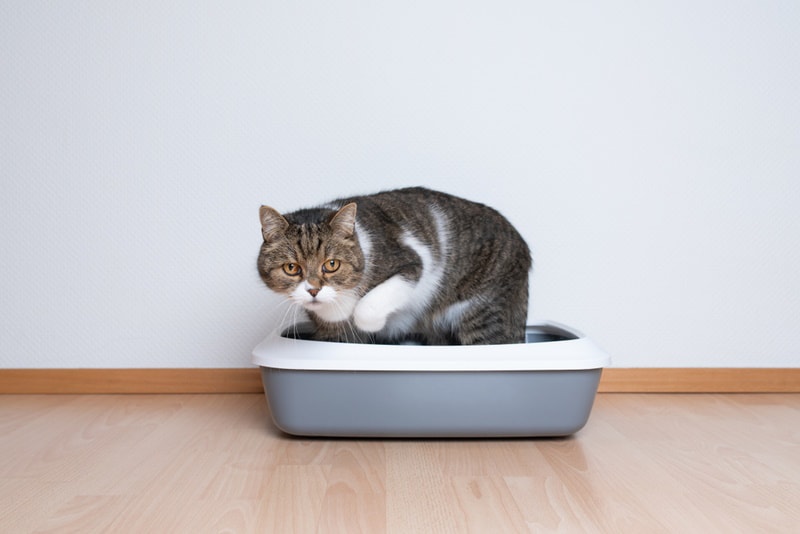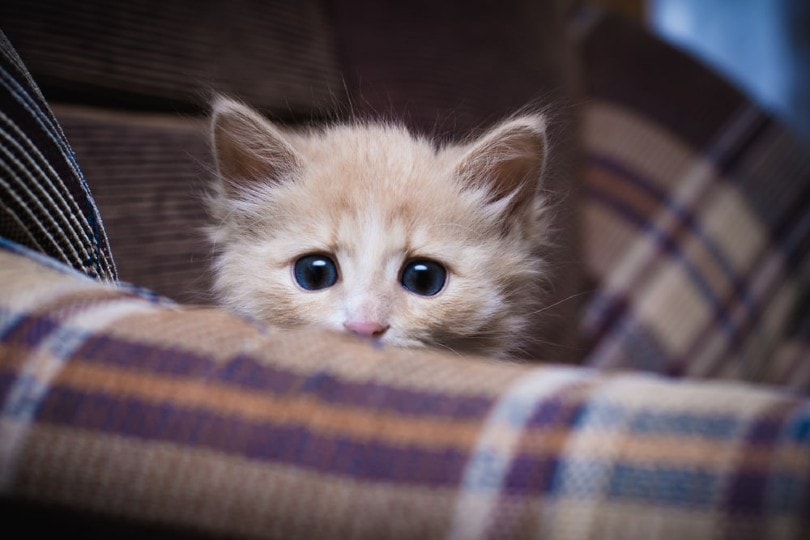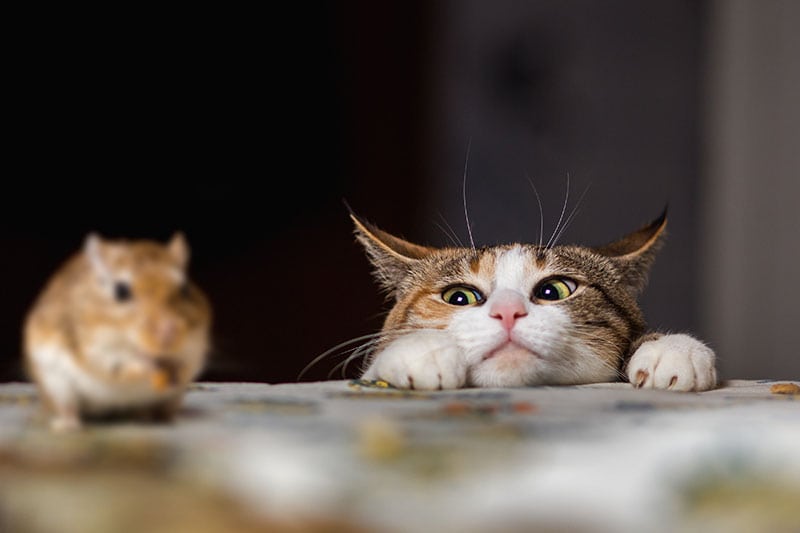The litter tray is a blessing because it means cats don’t have to poop and urinate on the floor. But it’s also a curse at times, whether it’s because of litter tracking through the house or the incessant scratching of the box. Cats are especially choosy about their litter, and who can really blame them?
They feel exposed when using the litter tray and, in the wild, they would cover their business to hide the smell from predators that could use it to locate their next meal. While your cat may not have predators to worry about in your bathroom or kitchen, the habit of covering their poop and urine is hardwired.
Many cats quickly cover their business by moving a small amount of litter over it, but other cats make more of a meal of the process. If yours is scratching the side of the litter box and effectively missing the litter itself, there could be a reason for it.
Below we look at the most likely reasons for this behavior so that you can find a solution.

The 5 Reasons Why Your Cat Scratches the Sides of the Litter Box
1. Dirty Tray
Cats are clean, tidy animals, and they often don’t like having to pee and poop in a dirty litter tray. You don’t have to completely swap the litter in the tray every day, but you should scoop out solids and clumped litter at least once a day, top up every few days, and give the tray a good clean every week or so.
You may need to do it more often if you have multiple cats sharing trays and if one tray is more popular than the others.
Our Favorite Products Incorporating Hepper's Advanced Bio-Enzyme Pet Stain & Odor Eliminator Spray and Litter Deodorizer fights even the toughest litter box smells. First, by keeping your litter box free of stuck-on messes each time you replace the litter, and second, by neutralizing odors upon contact. At PangoVet, we've admired Hepper for many years, and decided to take a controlling ownership interest so that we could benefit from the outstanding designs of this cool company!
Image
Product
Details
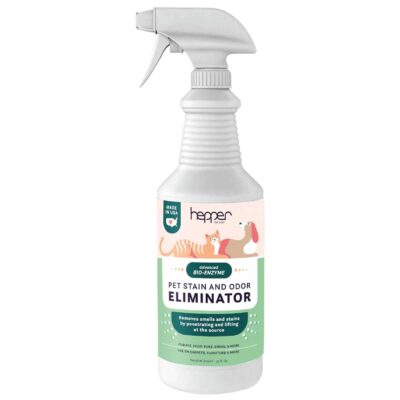
Hepper Advanced Bio-Enzyme Pet Stain & Odor Eliminator Spray
Check Price
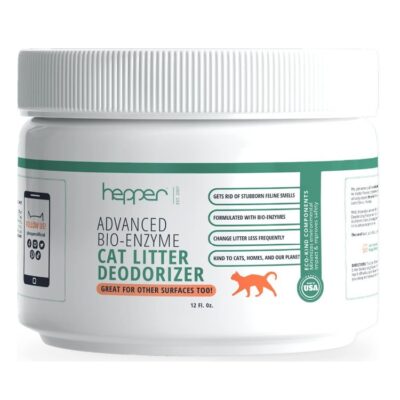
Hepper Cat Litter Deodorizer
Check Price
2. Not Enough Litter
You should fill a litter tray with up to a couple of inches of litter. If the tray has less litter than this, your cat will struggle to cover anything up. This can especially be a problem if you put plenty of litter in and then scoop out solid litter and clumped wet litter. After a few days of scooping, you may be left with a shallow pool of litter.
Check how much litter there is and add another inch or two to bring it up to a reasonable level.

3. Too Much Litter
If you’ve owned cats for any length of time, you will know they can be extremely picky, so as well as being upset at having too little litter, they may also decide that there is too much. Believe it or not, some cats don’t like kicking litter out of the tray, so if there is too much litter material, your cat may not be able to easily cover up its business.
Empty some of the litter out of the tray until it is 2 or 3 inches deep.
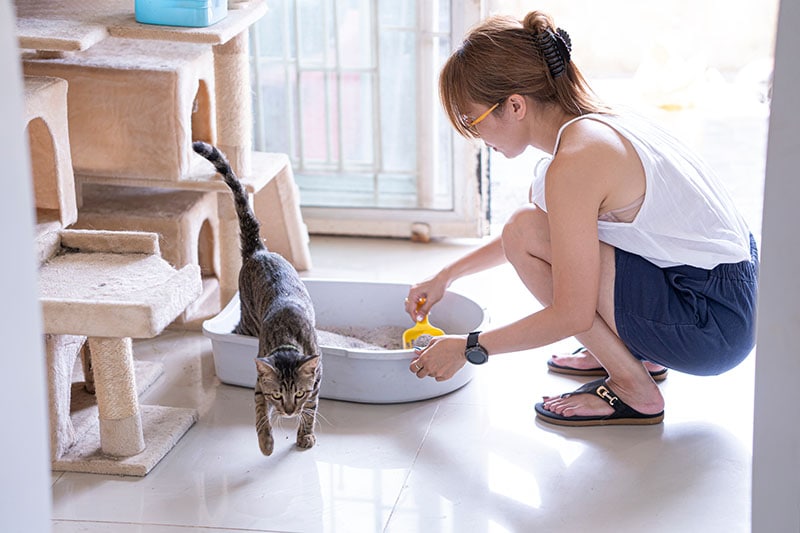
4. Litter on Paws
Some litter material can get stuck in between your cat’s paws. It’s uncomfortable, at best, and can be painful if the litter is hard and difficult to shift. If your cat gets a litter pellet stuck between its hyper-sensitive pads, it will do everything possible to shift it. This will include extra scratching of the litter. If this doesn’t work, your cat will likely look for other ways to get rid of the offending object.
This can include kicking at the side of the tray. It is also possible that your cat is kicking its leg out to try and shift the debris and catch the side of the tray by accident.
5. Too Small of a Tray
Cat litter trays do come in different sizes, and which size you choose should be governed by the size of your cat. If you have chosen a tray that is too small, and your cat prefers to be completely in the tray while covering its business, it could just be that it doesn’t have the room to get in and do what needs doing.
Check the size of the tray compared to your cat and consider buying a bigger litter tray, if needed.
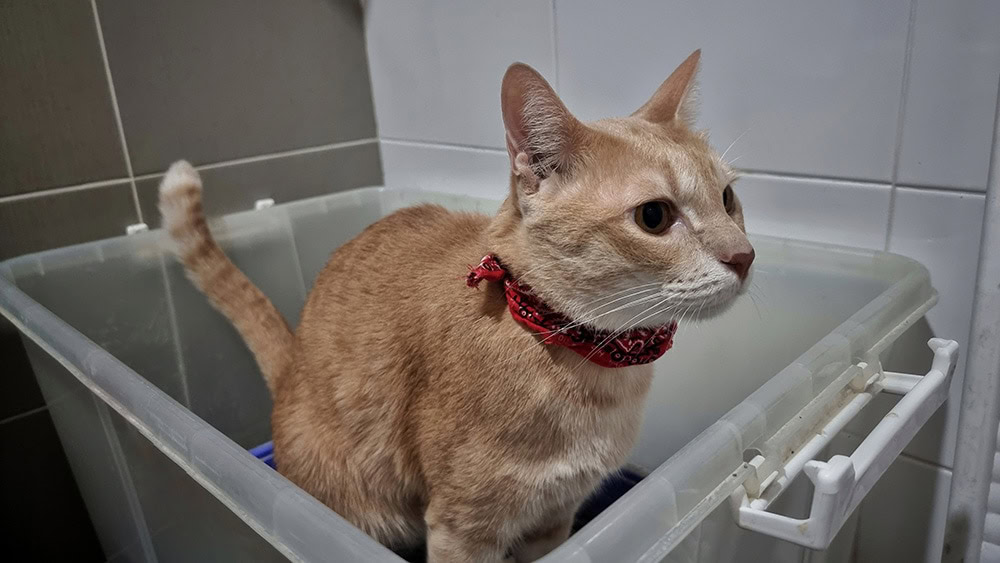

Frequently Asked Questions
How Many Litter Boxes Does a Cat Need?
It is generally recommended that you have one litter tray per cat, plus one extra. If you have one cat, you should have two trays, and if you have two cats, you should have three litter trays. Ideally, there should be some space between the trays, and you may want to put them in different areas of the house.
Where Should You Put a Litter Box?
Placement is as important a consideration as the number of litter trays you have. Cats want some privacy when they go to the toilet, so choose low-traffic areas of the house. Try to keep the tray away from hot radiators or cold windows, and make sure the litter tray is not too close to the cat’s water or food bowls because this can put them off from drinking or eating.
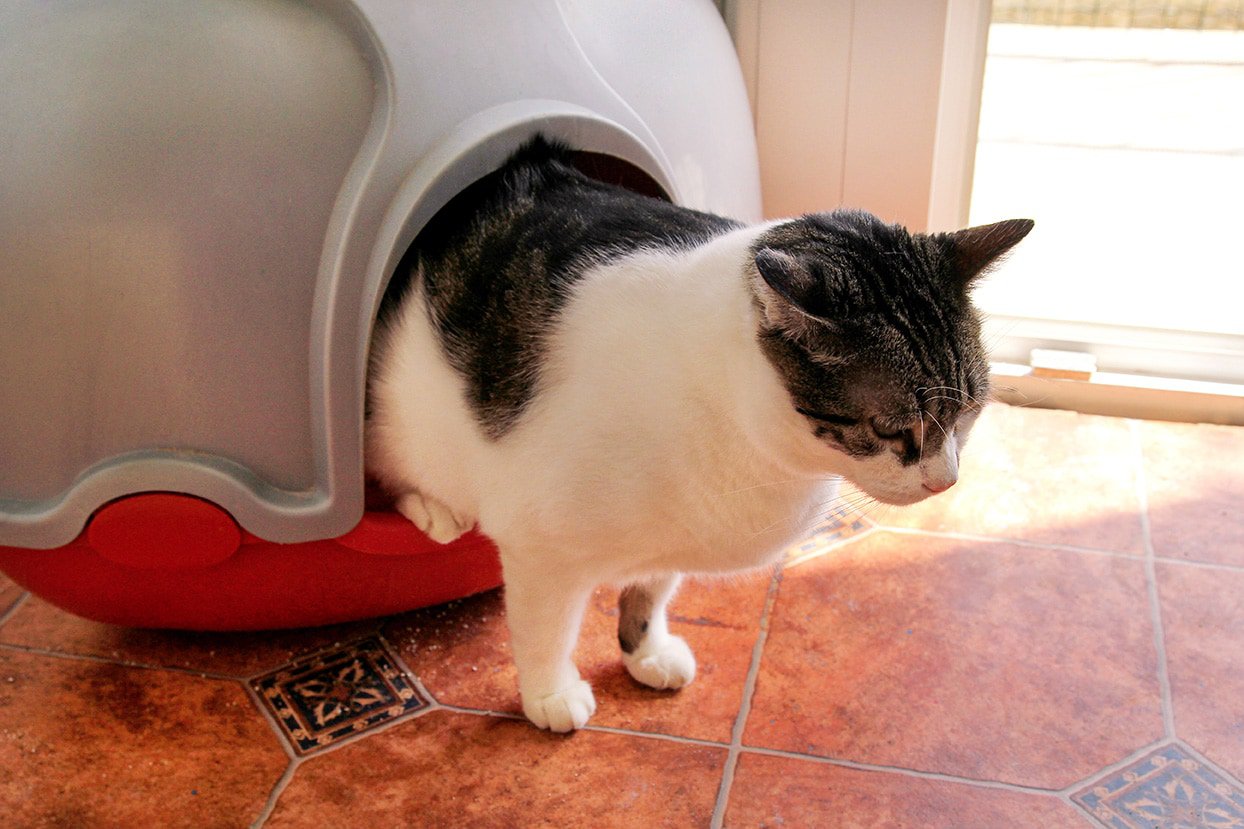
How Often Should You Change the Litter Box?
Litter boxes don’t need changing every day, but you should scoop poop and get rid of any litter that has got wet and clumped at least once a day. This naturally means discarding some of the litter each time and you will need to add some more to refill the tray every few days. Every week, you can do a full clean of the tray, ensuring your cat has a pleasant toilet environment.
Do Cats Prefer Open or Closed Litter Boxes?
Cats like privacy when they use the litter tray. As such, many prefer a closed or hooded litter tray. But every cat is unique, and some prefer an open tray so that they can keep an eye on their surroundings and watch for approaching threats. An open tray also means that they can move around more freely.
You may need to experiment to find your cat’s preference, but you can buy hooded trays with a removable hood so if your cat doesn’t like a covered tray, you can take the cover off and provide an open one instead.

Conclusion
Cats are naturally clean animals. Some need optimal conditions to be able to wee and poop, and even then, there might be times when things don’t go to plan. Occasional misses happen, and your otherwise clean cat might sometimes end up kicking the edge of the tray as it attempts to cover up.
Check the level of the litter and add or remove some so that there is a suitable amount in the litter tray. You can also check the size of the tray to ensure that it is suitable for your cat. Alternatively, your cat could be accidentally kicking the side of the tray as it tries to get rid of pieces of litter from its paws.
Featured Image Credit: Nils Jacobi, Shutterstock
